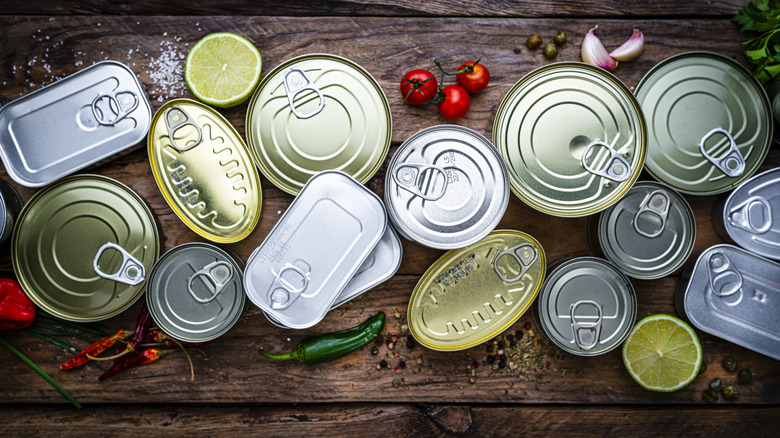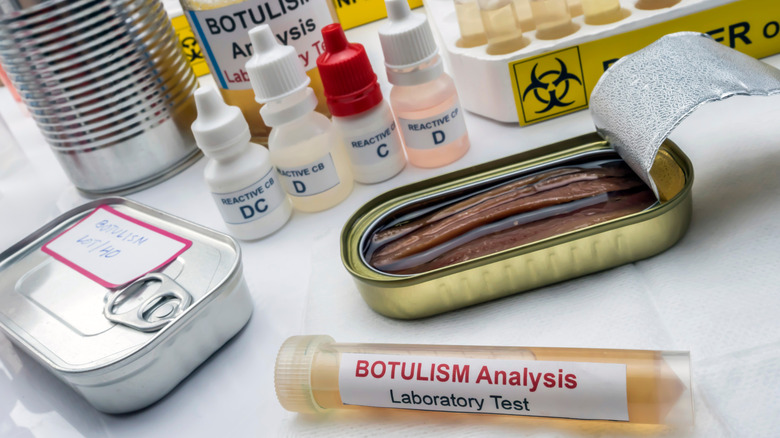The Tell-Tale Sign Your Canned Food Might Have Botulism
Canned food is known for its convenience and long shelf life. However, these hermetically sealed foodstuffs are not impervious from spoilage. In particular, if canned food exhibits any bulging, that's a giant warning sign that it may contain the deadliest natural toxin known.
Bulging or swollen cans may be contaminated by the bacteria Clostridium botulinum, which causes a rare but serious illness in humans known as botulism. These bacteria produce a neurotoxin that attacks the central nervous system. Ingestion of botulinum toxin causes difficulty in breathing, muscle paralysis, and if not treated quickly with an antitoxin, death.
Complicating the dangers of this toxin is the fact that botulism-contaminated food might smell, appear, and even taste normal. Even though swollen cans can be caused by several other factors such as improper storage, overfilling, and temperature extremes, any bulging canned food should be immediately discarded. The potential risk of botulism is just too great.
How botulism has affected the food industry
Botulism is a severe enough risk in canned food that the mere possibility of contamination can prompt massive recalls. Such was the case in the massive Snapchill canned coffee recall of 2024, when the company was forced to pull all of its canned products after the FDA noted that a new part of its canning process was not agency-approved. No cases of botulism related to the coffee were reported, which may be thanks to the wide-ranging recall.
Sometimes, however, a recall is initiated after botulism is confirmed. One of the biggest canned food recalls in history occurred in 1973, when workers at United Canning noticed bulging cans of mushrooms. Testing showed they were full of the deadly toxin. The recall affected 75 million cans and has the distinction of being America's first major food recall. Miraculously, there were no illnesses reported.
Botulism is a particularly potent danger to canned foods because the bacteria thrive in moist, low-oxygen environments. These can be present in other foods, too. For example, one of the biggest mistakes to avoid when thawing frozen fish is leaving it in vacuum-sealed packaging. This can create the perfect environment for botulinum to rapidly grow as the fish (a known source of this bacteria) warms up. Always remove frozen fish from its packaging and store it in the refrigerator.

